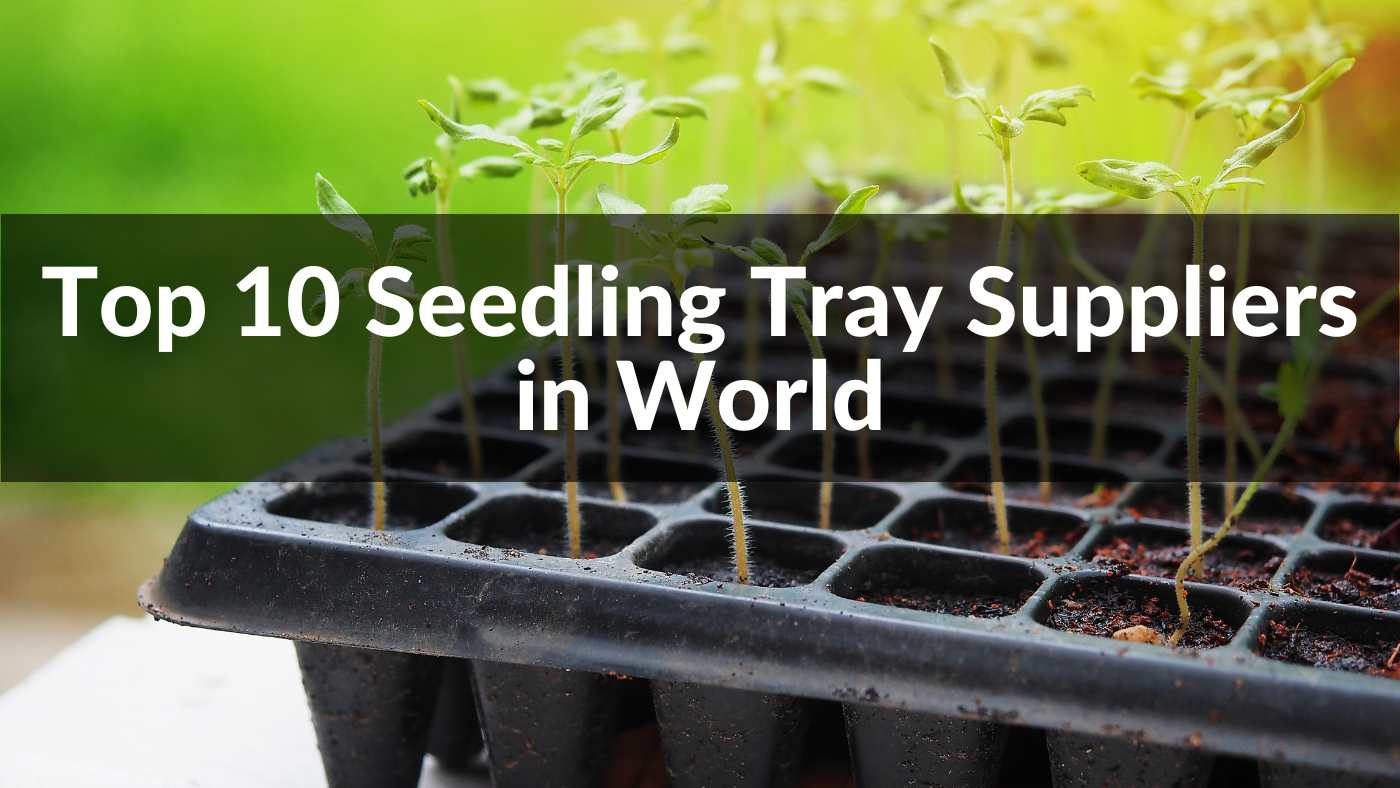
Embarking on a gardening journey or looking to optimize your existing green space? Discover how Garden Trays for Plant can be the cornerstone of nurturing and organizing your green buddies. Dive into the comprehensive guide below to explore the multifaceted world of garden trays, from understanding their functionality and material choices to leveraging their features for optimized growth.
In the realm of gardening, having the right tools and accessories is indispensable for nurturing growth. One such quintessential accessory is a garden tray for plants. These trays are not just mere containers but a haven where your green friends commence their journey of growth. They are the epitome of starting a new life, a place where seeds sprout, roots delve down, and life unfurls its essence, leaf by leaf, reaching out for the sun.
Garden trays for plant are designed to provide a conducive environment for the initial stages of plant growth. They come in various shapes, sizes, and materials to cater to the diverse needs of garden enthusiasts and professionals alike. These trays are usually shallow and broad, providing ample space for multiple plants while ensuring each one receives the necessary nutrients and care.
One of the salient features of garden trays is their versatility. They can be used indoors or outdoors, making them a flexible choice for all types of gardening endeavors. Whether you are starting your seeds indoors during the colder months or need a controlled environment for your young plants outdoors, garden trays provide that essential foundation.
The material of the garden trays is crucial as it directly impacts the health and growth of the plants. Common materials include plastic, ceramic, and sometimes metal. Each material has its own set of benefits and is suited for different purposes. For instance, plastic trays are lightweight, affordable, and retain moisture well, making them a popular choice among beginners and seasoned gardeners.
Furthermore, garden trays for plant facilitate efficient water management, preventing over-watering or under-watering. The design often includes drainage holes to allow excess water to escape, ensuring the roots don’t get waterlogged. This feature is invaluable as it promotes healthy root development which is paramount for the overall growth and vitality of the plants.
Moreover, garden trays are a boon for those with limited space. They are stackable and portable, making it possible to manage a mini garden even in compact urban spaces. Their functionality extends beyond mere plant growth; they also act as a protective barrier, safeguarding your precious plants from pests and harsh weather conditions.

The journey from a seed to a flourishing plant is one filled with care, attention, and the right nurturing environment. At the core of this nurturing environment lies the humble yet significant garden tray. A garden tray plays a pivotal role in a plant's early life, nurturing it from a tiny seed to a young sapling ready to be transplanted into the garden.
Let’s delve into the myriad roles that garden trays play in the life cycle of plants:
Garden trays create the perfect environment for seed germination. They retain the right amount of moisture, ensuring that the seeds have the essential conditions to sprout. The compact design allows for a high success rate as seeds are housed closely together, retaining warmth and moisture.
With their shallow design and often incorporated drainage holes, garden trays prevent water logging and promote healthy root growth. They ensure that the plants receive the right amount of water, neither too much nor too little, fostering a conducive environment for growth.
Garden trays act as a shield, protecting tender young plants from pests, diseases, and harsh weather conditions. They provide a controlled environment where the plants can thrive without the threat of external adversities.
For gardeners dealing with limited space, garden trays are a godsend. Their stackable and portable design allows for a mini garden in compact spaces. They maximize the use of vertical space, enabling gardeners to grow more in less space.
Transplanting can be a stressful event in a plant’s life. Garden trays make the process smoother. Once the seedlings are ready, they can be easily popped out of the trays and transplanted to a larger pot or directly into the garden soil without much disturbance to the roots.
The material of a garden tray is a significant factor that affects both the plants and the gardening experience. Different materials come with their unique set of advantages and drawbacks. Let's explore some common materials used in garden trays:
Pros:
Cons:
Pros:
Cons:
Pros:
Cons:
In a world leaning towards eco-friendliness, materials like bamboo and coconut coir have emerged as sustainable choices for garden trays. They biodegrade naturally over time, reducing the carbon footprint of your gardening endeavors. While they may not last as long as plastic or metal trays, their environmental benefits make them a worthy consideration for the eco-conscious gardener.

The beauty of gardening lies in its versatility and the plethora of options available to nurture plant life. A critical aspect of this versatility is the variety in the size and shape of garden trays. These factors are not merely aesthetic choices but play a significant role in the health and growth of the plants. Let’s explore how the dimensions and form of garden trays can be matched to the needs of your plants.
The dimensions of garden trays should be selected based on the type of plants you intend to grow. Here’s how to go about it:
The shape of a garden tray can significantly impact the ease of gardening and the health of your plants. Here’s a breakdown of common shapes and their advantages:
Garden trays come in an array of types, each designed to cater to specific gardening needs. Whether you're starting with seeds, growing microgreens, or venturing into water-based gardening, there's a garden tray tailored to your needs. Let's delve into the diverse world of garden trays:
Seedling trays are the first home for your seeds. They are designed to provide a conducive environment for seed germination and early growth. With individual cells, each seed gets the space it needs to sprout and grow, making transplanting easier and more successful.
Microgreens trays are shallow and typically designed with a grid pattern to support the growth of small, nutritious greens. They provide the right amount of space and aeration for microgreens to thrive, making it possible to harvest a bounty of fresh greens in a small space.
Decorative trays bring a blend of functionality and aesthetic appeal to your gardening space. They come in various designs, materials, and finishes, adding a touch of elegance while serving the primary purpose of supporting plant growth.
Hydroponic trays are engineered for soil-less gardening. They hold plants in place while their roots dangle into nutrient-rich water. These trays are a part of a system that provides plants with the essential nutrients and conditions for growth, directly through water, paving the way for robust, healthy plants.

Garden trays aren’t just flat containers; they come with features engineered to enhance the growth environment for your plants. Let's discuss some of the functional features that make garden trays an indispensable tool for gardeners.
A well-designed drainage system is crucial for preventing overhydration and waterlogging, which can lead to root rot and other issues. Garden trays often come with drainage holes to allow excess water to escape. Some trays have raised ridges or mesh bottoms to elevate the plants slightly and ensure the water drains away efficiently. Others might feature channels that direct water away from the plants or towards a drainage outlet. This simple yet effective feature is vital for maintaining the right moisture levels and promoting healthy root growth.
Compartments and cells are features that bring organization to your garden trays. These divisions provide individual spaces for each plant, reducing competition for resources and preventing root entanglement. Here’s how they benefit your gardening endeavors:
Optimizing growth in your garden is a blend of various factors working in harmony. Among these, the right amount of light, heat, and the choice between soil and soil-less mixes play pivotal roles. Here’s how you can navigate these aspects to ensure that your plants thrive:
Light and heat are indispensable for plant growth. The positioning of your garden trays and the material of the trays can significantly impact how your plants receive these vital elements:
The medium in which your plants grow is crucial for their health and productivity. Here’s a comparative analysis to help you decide between soil and soil-less mixes:
The journey of gardening doesn’t end with planting. Maintenance and management are ongoing processes that ensure the health and vitality of your plants. Among these, cleaning and disinfecting your trays, along with rotating and repotting your plants, are key practices. Let’s explore these aspects in detail:
Regular cleaning and disinfecting of garden trays prevent the build-up of harmful pathogens, ensuring a healthy growing environment:
As your plants grow, their needs change. Rotating and repotting are essential practices to accommodate these changing needs:

Investing in garden trays is a prudent step towards organized and efficient gardening. However, understanding the cost implications both in the short and long term is essential to making an informed decision. Let's delve into the financial aspects associated with garden trays:
The upfront cost of garden trays can vary based on several factors including the material, size, and design. Here are some considerations:
The long-term value of garden trays is gauged by their durability and reusability. Investing in durable trays can save money in the long run:
Incorporating the right garden trays is pivotal in steering your gardening venture towards success. As you delve into the gardening realm, choosing a trusted partner for quality garden trays is crucial. Look no further than Linkwin, a leading manufacturer of Garden Trays for Plant. With a legacy of excellence, Linkwin offers a range of trays that cater to various gardening needs. Explore their extensive collection and make an informed choice to foster a flourishing green space. Visit www.agriculturaltool.com to discover how Linkwin can be the gateway to your gardening triumph.
Read More:
The Ultimate Guide to Planting in Fabric Grow Bags
The Green Haven: Nurturing Growth with Indoor Planting Trays?











We use cookies to make the website work, to provide advanced features, social media and traffic analysis, and we use analytics and third-party advertising cookies. If you choose to click "Deny All", you will retain the default setting of not allowing the use of cookies or other tracking tools other than technical tools.

